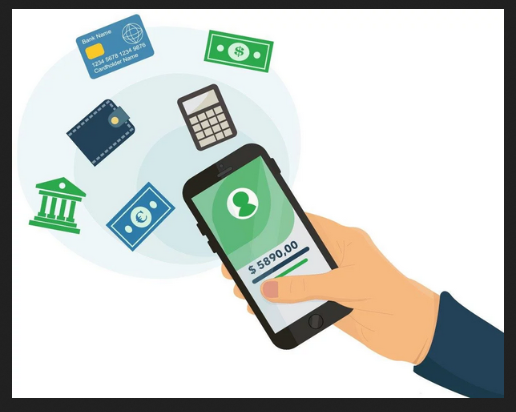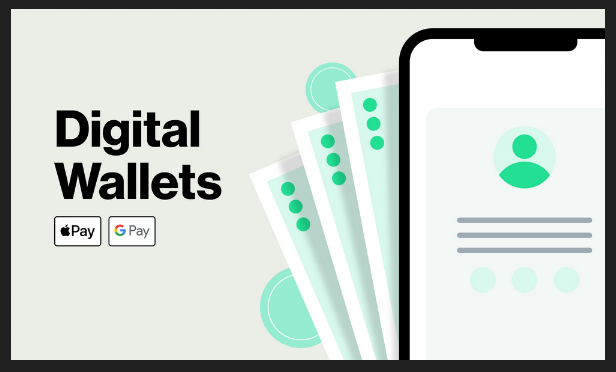What is a digital wallet, exactly? It can be a simple way to send and receive money without having to carry a real card or enter credit card information online. However, not all merchants accept mobile or contactless payments, and your preferred digital wallet app may not work outside of your country of residence.
Here’s all you need to know about digital wallets and how to use them to send money abroad or make mobile payments.
A digital wallet is the electronic equivalent of a wallet or pocketbook. It’s typically a mobile app, but you may be able to access your digital wallet through a web browser and make purchases from other mobile devices, such as a smartwatch.

M-wallets are mobile-only digital wallets, but e-wallets, or electronic wallets, work on a broader range of devices.
In most cases, you can store numerous cards in your digital wallet, or e-wallet, just as you would various payment methods in a physical wallet, such as a credit card, debit card, and cash in your local currency.
In addition to credit and debit cards, digital wallets may be able to store:
- Gift certificates
- Loyalty certificates
- Cards for public transportation
- Tickets to a concert
- Boarding tickets
- Identification documents
- Bitcoin and other cryptocurrencies
Although digital wallets are not bank accounts, some may have a cash balance that you may replenish with a debit card or link directly to your bank account.
How to Utilize a Digital Wallet
Digital wallets can be used to pay for goods and services at stores, send money to friends and family, and even send money to oneself.
To begin, enter your bank account or credit card details into your digital wallet. Tokenization is a method used by current digital wallets to safeguard your card number.
Regardless, it’s a good idea to verify your digital wallet provider’s security requirements and encrypt your digital wallet software with a passcode or a face recognition tool like Face ID.
You can use your digital wallet to make online and in-store purchases wherever credit cards are accepted once you’ve submitted your financial information.
Find the contactless icon.
The two most common contactless payment techniques utilized by digital wallets are near-field communication (NFC) and magnetic secure transmission (MST). These technologies send a signal between your mobile device and the merchant’s contactless card reader.
Select the “card” you want to pay with in your digital wallet, then move your device close to the card reader to begin the transaction.
If you’ve activated biometric security on your smartphone, you may be asked to unlock it using your face or fingerprint.
Utilize a QR code.
Some merchants may use a POS program that uses a QR code instead of an NFC payment terminal.
Customers in some regions of Asia, for example, can use a digital wallet to view and pay their bill by scanning a QR code.
To use this option, look for PayPal or other QR codes at the checkout counter.
Money should be sent to family and friends.
If you and your recipient both use the same digital wallet or mobile banking software, you may be able to send them a payment by searching for their username, phone number, or other account information credentials.
Friends in the US frequently “Venmo” one another their half of a bill, whereas Brazilians commonly use the Pix payment system for identical day-to-day transactions.
However, digital payments are typically only available within a country’s banking system, so you may need to use an app like Remitly for international money transfers.
The Advantages of Digital Wallets
Knowing how to use a digital wallet is vital if you live in or want to visit a country where mobile payments are the norm. However, this isn’t the only reason to learn how to use a digital wallet. Here are three more advantages to consider.
Security
Carrying credit or debit cards in an actual wallet could be risky. Even if you never misplace or lose your wallet, identity thieves may take your credit card information when you use an ATM.
The use of digital wallets reduces unauthorized card transactions. They save your payment information securely, and you can protect your card information from hackers by using various types of verification.
If your phone is stolen, you can remotely disable your wallet, avoiding the need to cancel your card and wait for the issuer to issue you a new one.
Convenience
Using a digital wallet may also be more convenient than traditional payment methods. You may be able to monitor your balance and set up alerts and notifications directly in the app, depending on the type of e-wallet you use.
You can avoid carrying cash and even changing currency if you use a digital wallet that allows international transactions.
You may also use it to keep stuff like airline boarding passes and concert tickets, removing the need to worry about leaving important paperwork at home.
Speed
Digital wallets can often process transactions much faster than regular payment methods. A check can take several business days to clear, and credit card payments may not reflect immediately on your account balance.
You may use your digital wallet whenever you want, so you don’t have to wait till your bank is open to make a payment. Many person-to-person transactions occur quickly, particularly if your recipient uses the same mobile banking service as you.
Digital wallet examples
You’ve definitely heard of some of the world’s most popular mobile wallets, such as AliPay and Venmo. Three of the most popular digital payment apps, as well as the devices that enable them, are listed below.
Wallet by Apple
Apple Wallet is available on a wide range of Apple devices, including iPhone 6 and later, select iPads, and wearable devices such as the Apple Watch.
It accepts Apple Pay contactless NFC payments, which can be utilized for in-app purchases and web transactions.
Apple Pay is available in hundreds of countries worldwide, however bear in mind that foreign transaction fees may be charged by your credit or debit card company.
Wallet by Google
If you don’t have an Apple smartphone, you won’t be able to use Apple Pay, but there is a similar digital wallet for Android smartphones. Google Wallet (formerly known as Google Pay) also use NFC and supports contactless payments in a variety of countries.
Google Wallet allows you to save everything from digital vehicle keys (certain models only) to your driver’s license in some U.S. jurisdictions.
Wallet from Samsung
Samsung’s products, which include smartwatches and smartphones, have their own digital wallet. Unlike Apple and Google Wallet, it accepts NFC and MST transactions.
Samsung Pay is now part of the Samsung Wallet software, which allows you to store debit and credit cards from over 1,000 financial institutions. You can also preserve your immunization record and use it to ride the subway in New York City.
Use a digital wallet for overseas money transactions.
Digital wallets are a handy way to pay for goods and services using a smartphone app, as well as send money to friends and family. However, not all digital wallets accept foreign payments, and if they do, international transaction fees may apply.
If you need to send money to friends or family members who live in another country, an international money transfer service such as Remitly may be a better solution. Remitly facilitates speedy and low-cost international money transfers.